Rami Malek takes Greg Williams to the Nuremberg premiere.
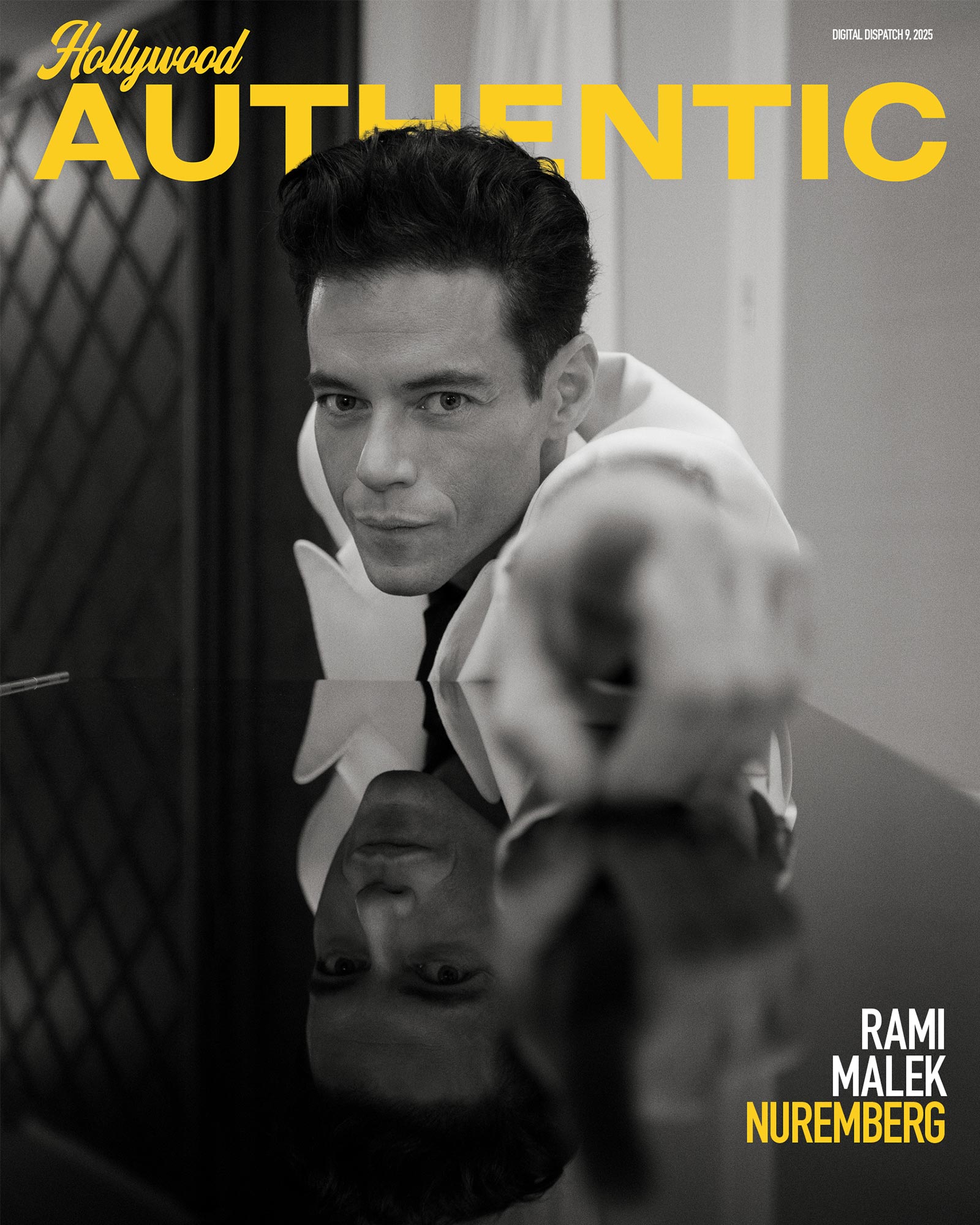
Photographs by GREG WILLIAMS
Words by Jane Crowther
Greg Williams joins Rami Malek as he premieres Nuremberg in London, and considers the all-star acting relationships that create on-screen drama.
When Greg Williams’ meets Rami Malek as he prepares for the premiere of his latest film Nuremberg at Claridges in London, he tinkles the keys of the piano sitting in his suite. In his Valentino tux, he matches the keyboard. In his latest film the Oscar-winner plays US army psychiatrist Dr Douglas Kelley, a real-life shrink who assessed the Nazi leaders on trial in the titular city in 1945. Among his patients was Hermann Göring (Russell Crowe) and the conversations the two men have helped unravel Hitler’s high command and revealed the horrors of the Holocaust. It’s a film that shows in unblinking detail the footage of the liberation of the concentration camps and asks questions about how men can commit such diabolic acts. In a world currently in turmoil, Malek sees the modern-day echoes in the chain of events depicted on screen, and the themes the film explores.
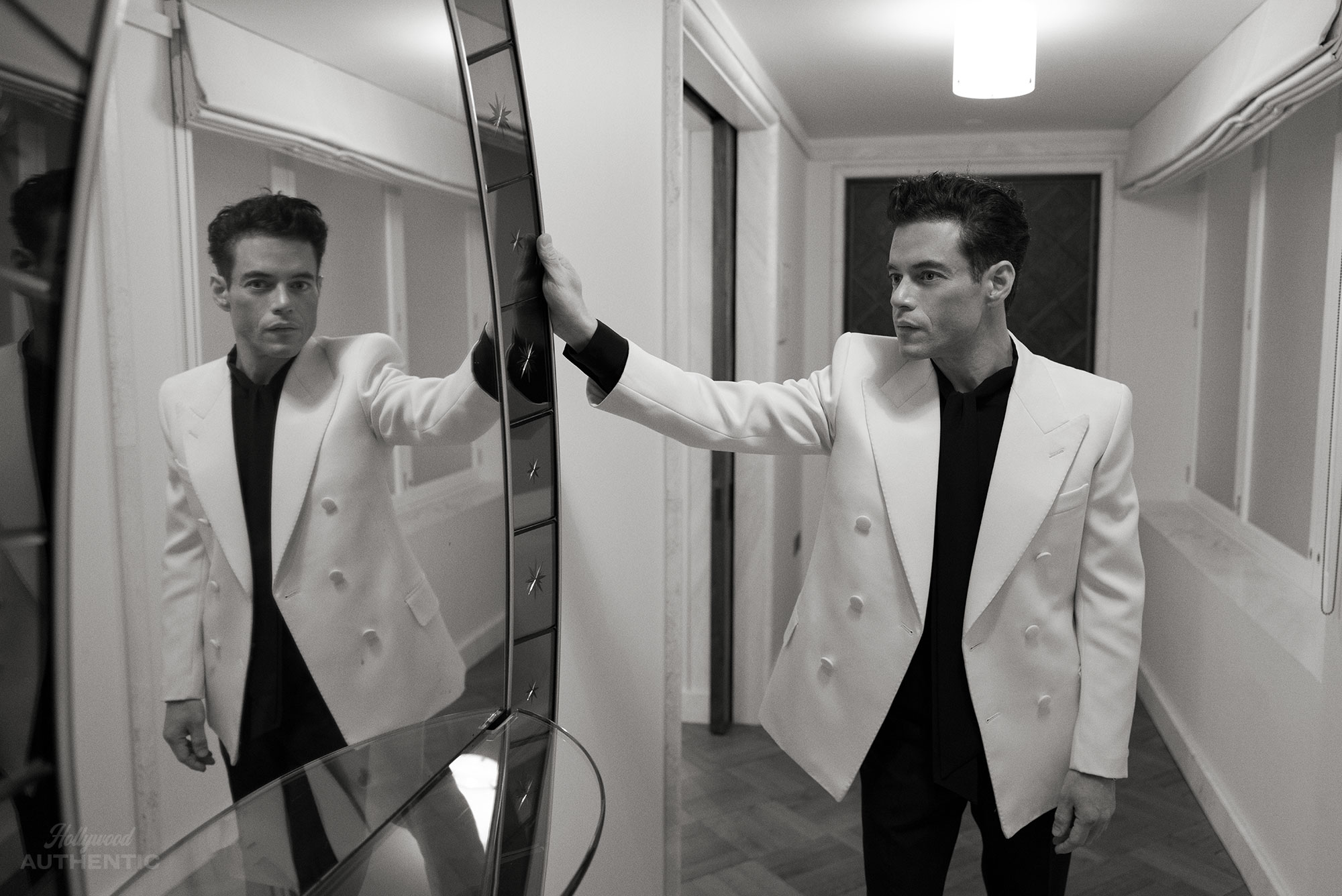
‘What it reminds you is, this could happen at any time in history – history does repeat itself, and it will repeat itself. I think the lesson that hopefully people get is what we do when things like this happen in our world? Are we complicit? Are we silent? Is it a call to action? Do we speak up? For me, this film is a way of speaking up. It’s a reminder. Every time we’re screening the film, I’m getting notes from people who are saying, ‘I’m sorry, I couldn’t make it after. I had to wrestle with some things in my mind.’ I think that’s very meaningful. I love when things are entertaining, but I’m very proud of the message that this film tells. I’m really proud of it.’
Key to the film is the cat-and-mouse gameplay between Kelley and Göring. Malek had quite the scene partner in Crowe. ‘I absolutely loved working with Russell, because he’s a titan,’ he says as he walks through the hotel to a waiting car, ready to take him to Leicester Square for the premiere. ‘One would think that he could have a massive ego but he was very generous with me. After our first take, he came up to me, and he said, ‘You’re bringing more to this character than I had seen on the page’. He didn’t have to do that. And I couldn’t tell if that was him just, you know, playing into the character, of wanting to be a bit charming and intoxicating. Or if that was actually just Russell being Russell, and putting his guard down, and saying, ‘Hey, let’s jump into this together, because it’s a powerful story, and we want to bring our A-game’. And we did. There were moments where it was incredibly tense between the two of us. Each take was different. That’s what you expect from someone at his level. I think we just raised our game. We all knew we had to.’
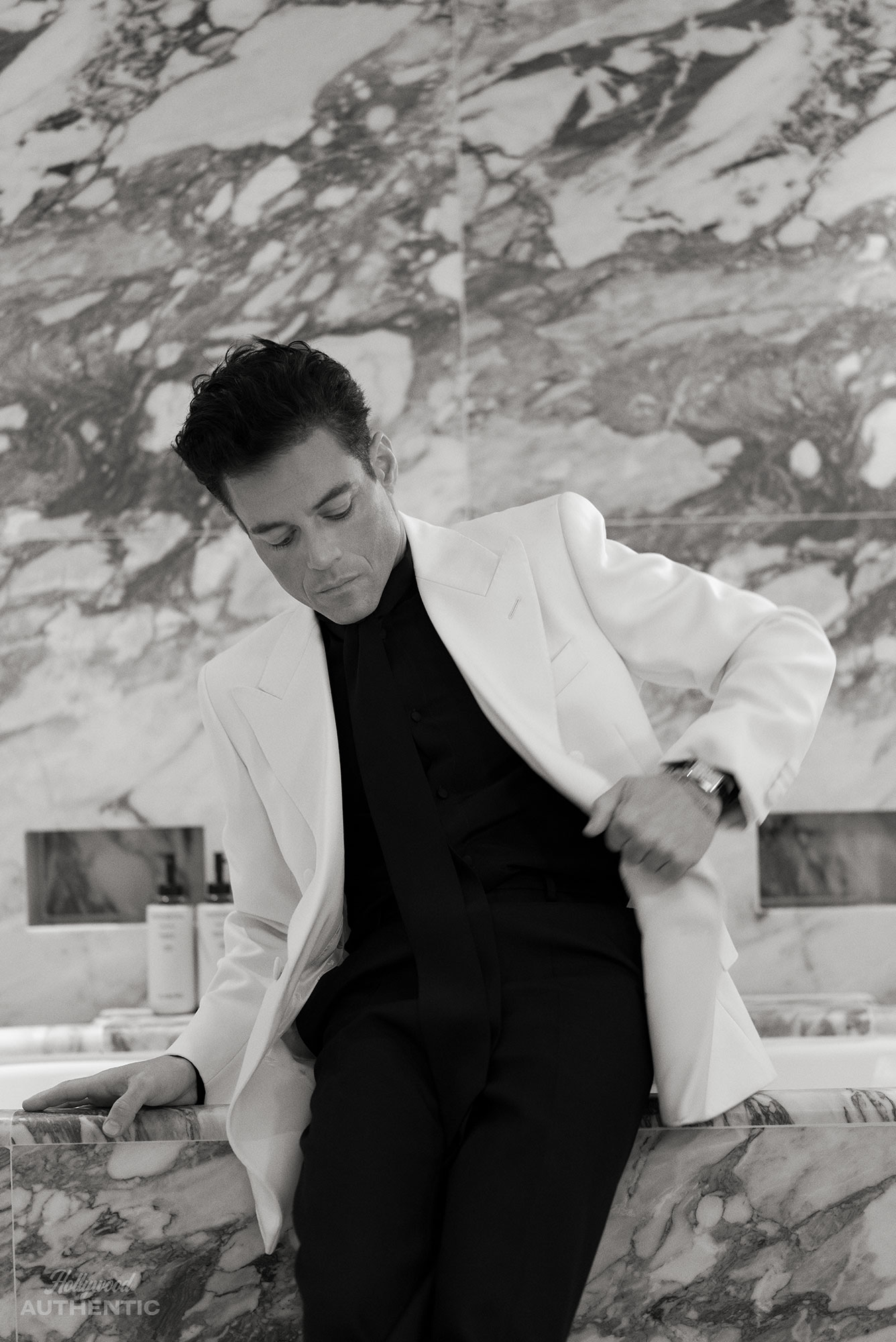
I absolutely loved working with Russell, because he’s a titan, one would think that he could have a massive ego but he was very generous with me. After our first take, he came up to me, and he said, “You’re bringing more to this character than I had seen on the page.” He didn’t have to do that
Malek takes a spin in the hotel’s revolving door for fun before making it to the car. Once settled in the back seat he recalls working with Leo Woodall, co-starring as a German interpreter with hidden secrets. ‘James Vanderbilt, our director, wanted us to meet because we were going to spend so much time together. It started with a lot of banter. I was able to take the piss with him – back and forth, you know, as a Brit. But I quickly realised that we were going to get along very well, and we did. We had each other’s backs through every moment. He has this effortless charm.’ Also on-board, Michael Shannon, playing supreme court justice, Robert Jackson. ‘Shannon and I have known each other for years, so that was an easy relationship to spring back into. He works so damn hard. He loves what he does to a degree that I wonder if there’s another actor who appreciates acting as much as he does. But he is one of the funniest people I’ve also come across. No one expects it, but he’s got this dry wit and charm. And I think he should have his own stand-up routine.’ Despite personal admiration and friendships, each working relationship with each actor was different.
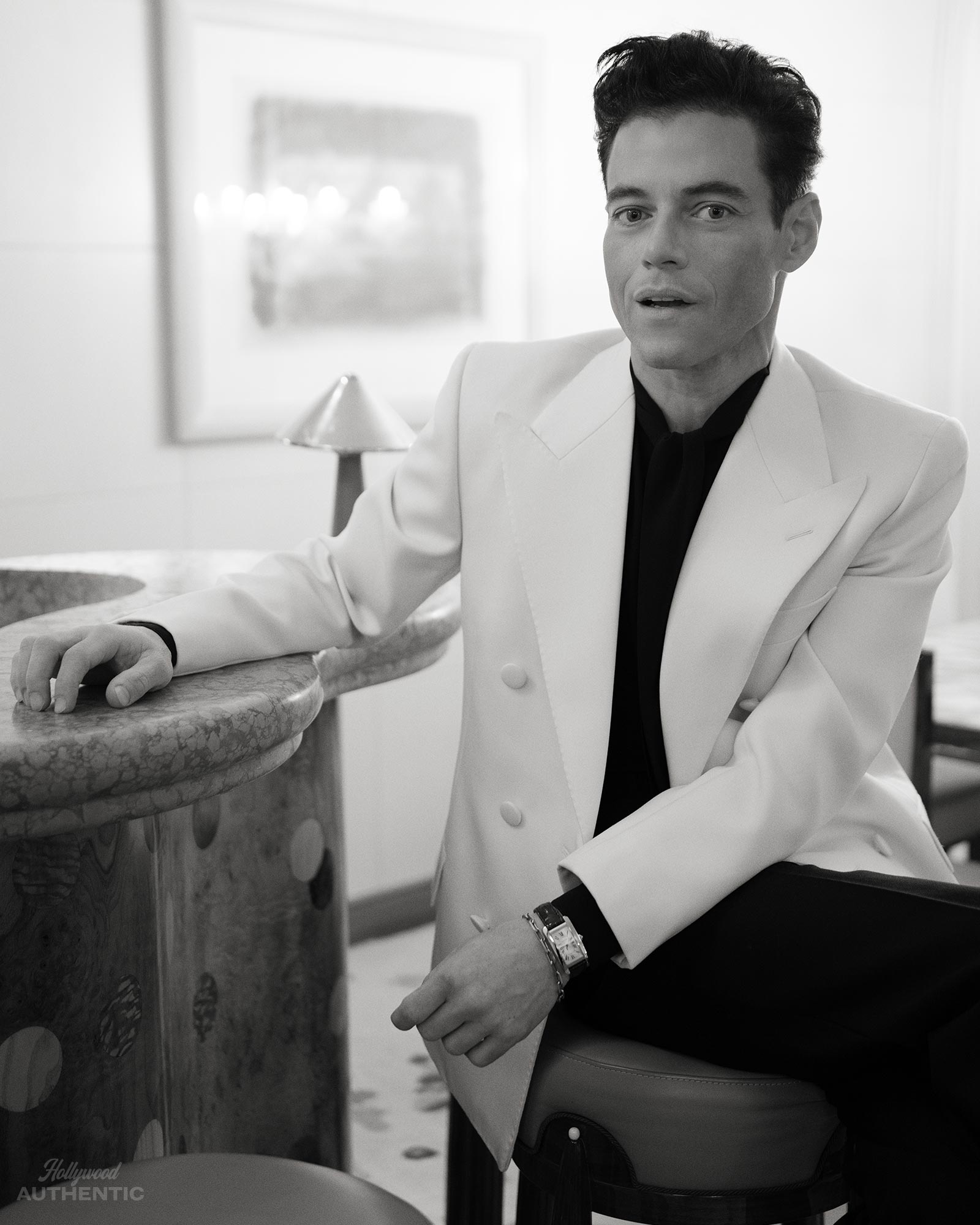
‘Russell could easily, in between takes, jump into a story about him visiting the Sistine Chapel, and them treating him as if he was Maximus, and we’d all be laughing. You’d get those great moments of charm, and that would, in a way, affect how we all related to him as Hermann Göring. You could see how someone could be so charming, even sitting across from him in that uniform. And it would remind you that evil doesn’t just get disguised as a certain uniform or a certain belief system. And then, in contrast, as funny as Shannon is, I know to leave him alone between takes. I have a sense that he wants to be in his personal space. You give that actor their space. And then you come in and bring something new to each take, which he did every time we were together. With Leo, we were able to joke around quite a bit because of the nature of our relationship. But then he ended up showing up to a surprise birthday party of mine, and you realise that relationship is going to continue for quite some time.’
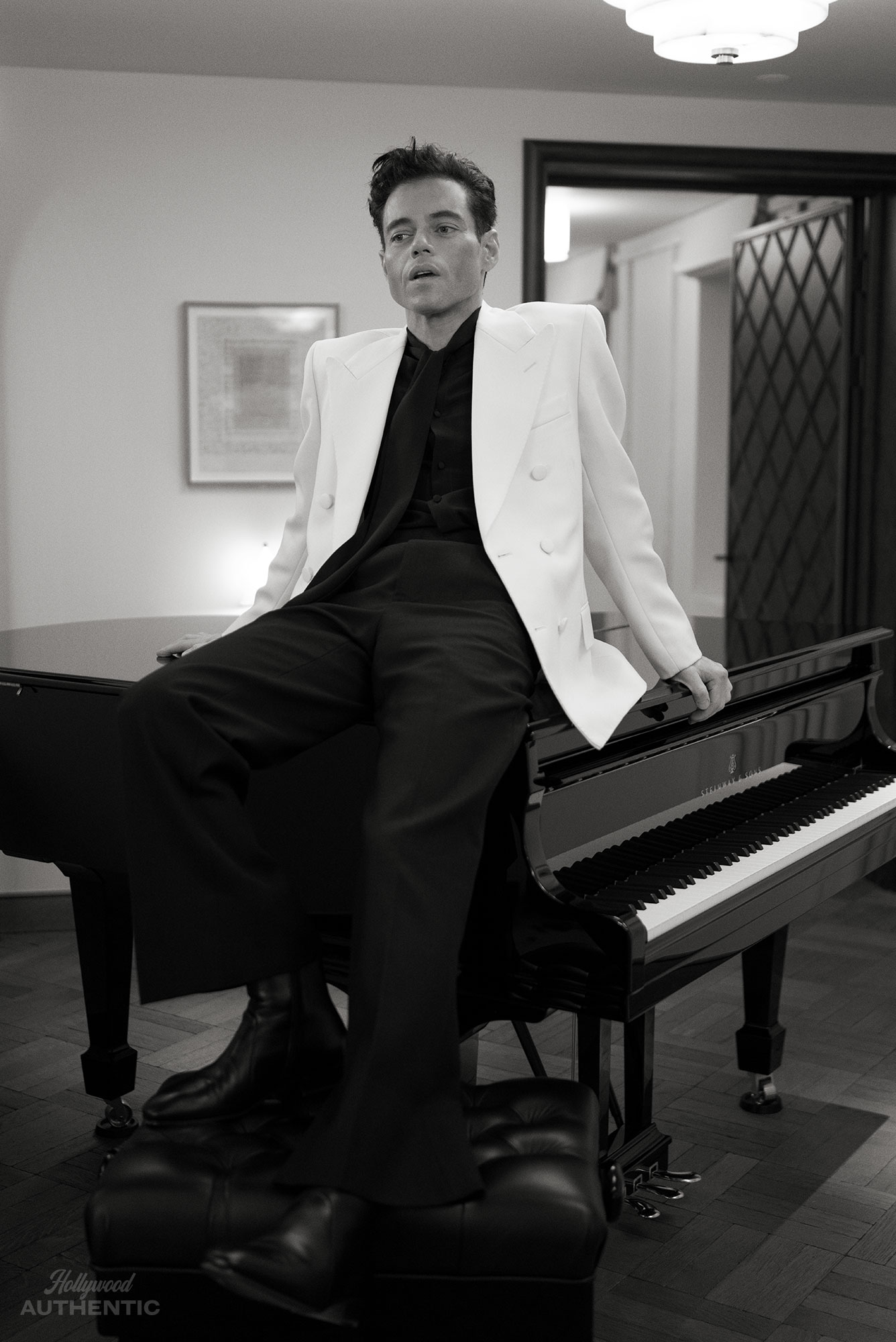
With its subject matter, stellar cast and handsome production values, Nuremberg has something of an old-fashioned quality about it that recalls Kelly’s Heroes or A Bridge Too Far. Malek agrees that it’s the sort of film, in an established-IP landscape, that doesn’t get made very often these days. ‘Oppenheimer, on paper, is a film that shouldn’t be made, but was. That’s the same casting director we had – John Papsidera – who has assembled all of these great actors together. I think when you have people who gravitate to it from the acting perspective we had on board, but also designers – Eve Stewart, who’s an Academy award-winning production designer, cinematographer Dariusz Wolski, who has done all of Ridley Scott’s movies and the Pirates of the Caribbean films…. you get a sense that the film is timely, urgent.
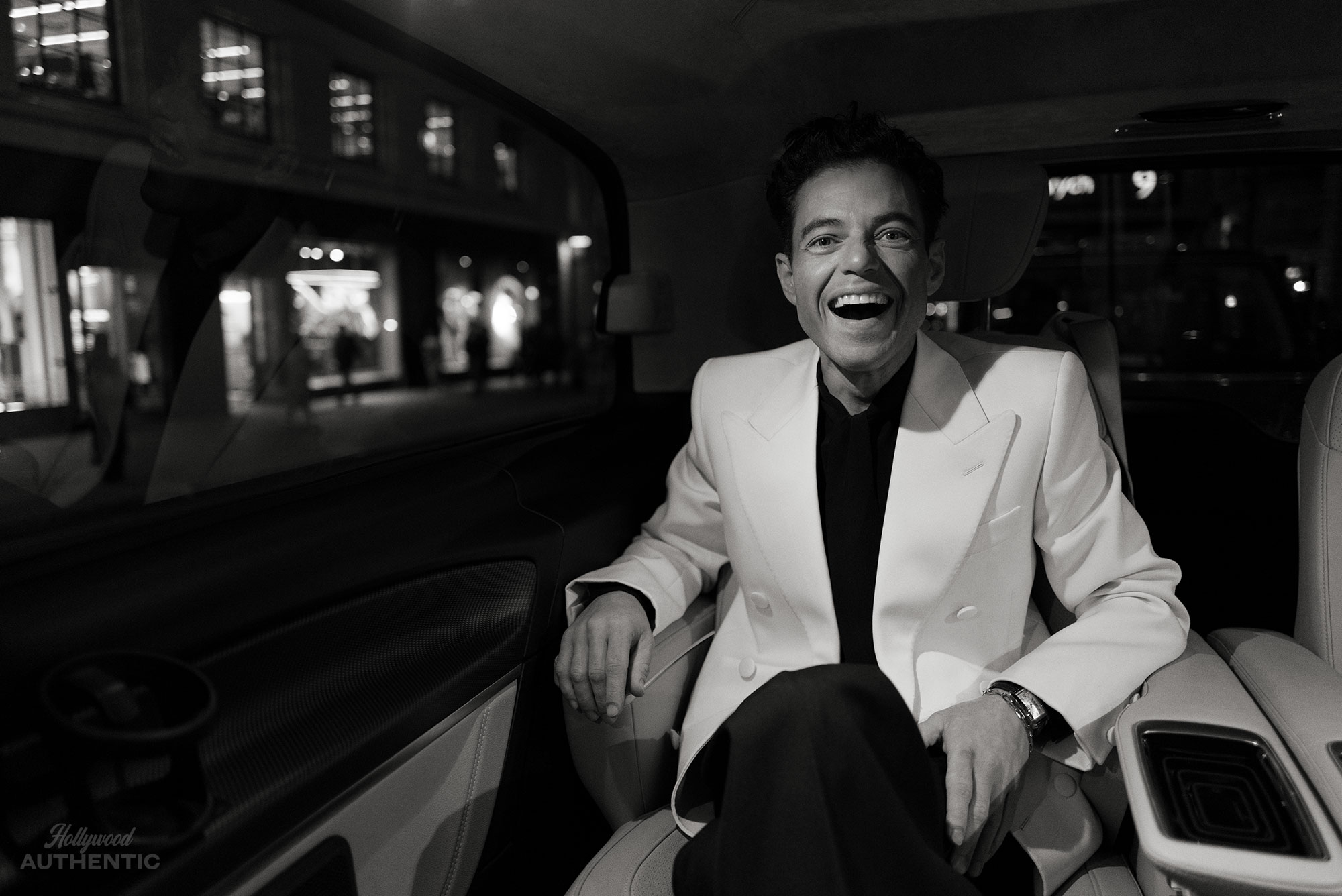
These people could go and be doing anything at this point. The reason that they chose this is because it had something special behind it. We’ve heard of the Nuremberg trials, but we didn’t know that this relationship existed between a psychiatrist, who was charged with discovering if these 22 Nazis were fit for trial. And that’s fascinating in and of itself.’
Malek was moved by the history of the project himself. ‘There are moments when we’re watching the footage of the atrocity in that courtroom. It was played for us for the first time. It’s gut-wrenching. James Vanderbilt built the film like a thriller, and then he gives you this gut-punch as well. I find it odd to use the word, with Nuremberg, “entertaining”. That might sound like a very strange juxtaposition, but it exists, and I think that’s what makes this film especially powerful.’
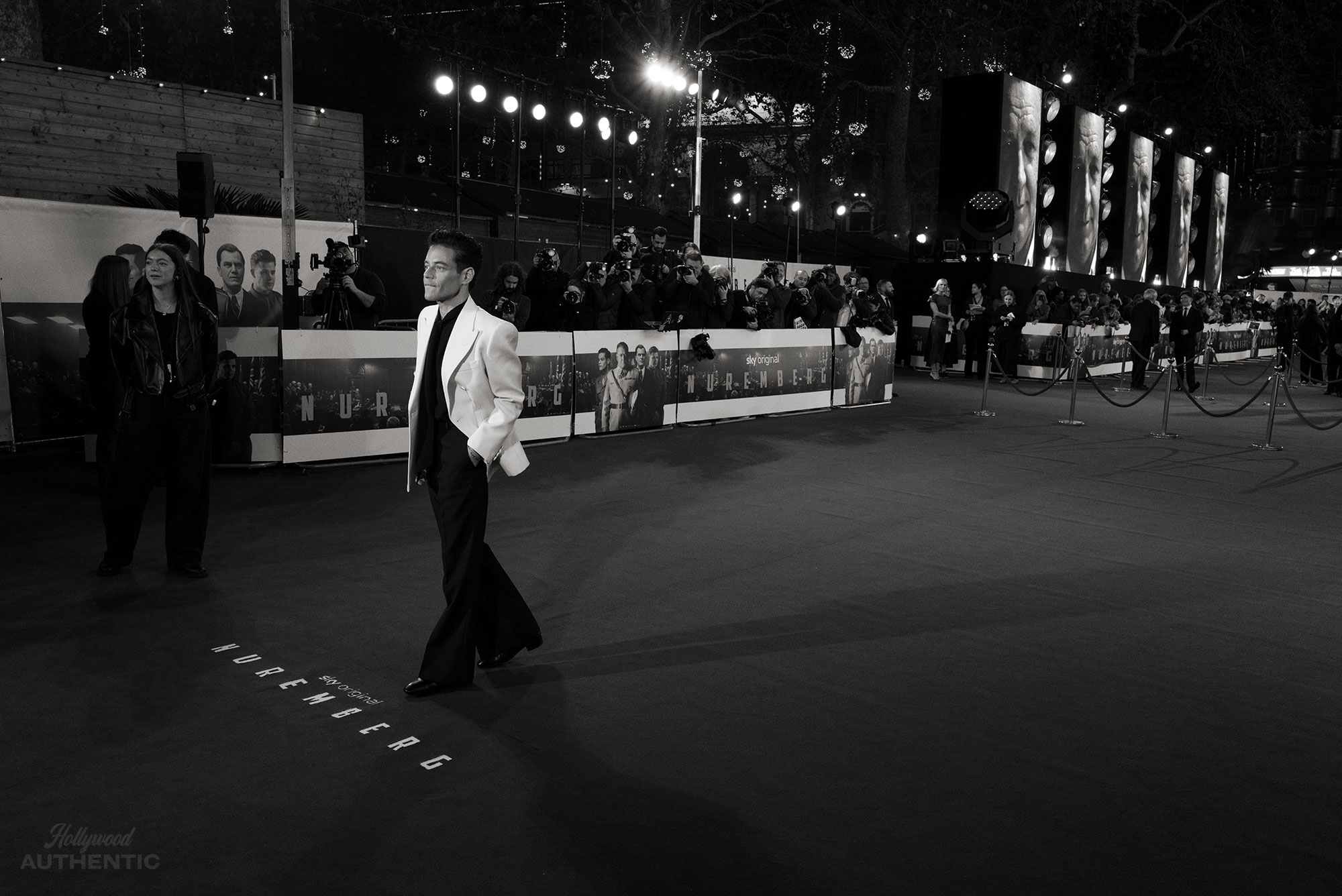
As the car approached the red carpet on Leicester Square, Malek admits he still gets excited stepping out into the glare of the spotlight, amid crowds of shouting fans and media, despite having debuted numerous films in the city. ‘I used to get nervous. I’ve now found a way to just chill out. Have a nice bath, a cup of tea. But it’s exciting. I’ll find this moment – as we’re about to step out of this vehicle into all of the madness – I will find the joy in it.’ He looks at the crowds waving pictures to sign and chanting his name. ‘There’s a lot of love…’
Photographs by GREG WILLIAMS
Words by JANE CROWTHER
Nuremberg is in cinemas now

Words by JANE CROWTHER
Broadway adap Wicked was a commercial and critical success last year – buoying the box office with its green vs pink frenemy saga of two teen witches who take different paths when exposed to the hypocrisy of the wizard of Oz. The sequel is much anticipated as the love triangle and Ozian battle for hearts/minds comes to a head and frankly, it matters not whether it’s actually any good, such is the devotion of its fanbase. Plus, as Christmas season movies go, For Good has a lot going for it – colour-pop everything, big tunes and four-quantdrant appeal.
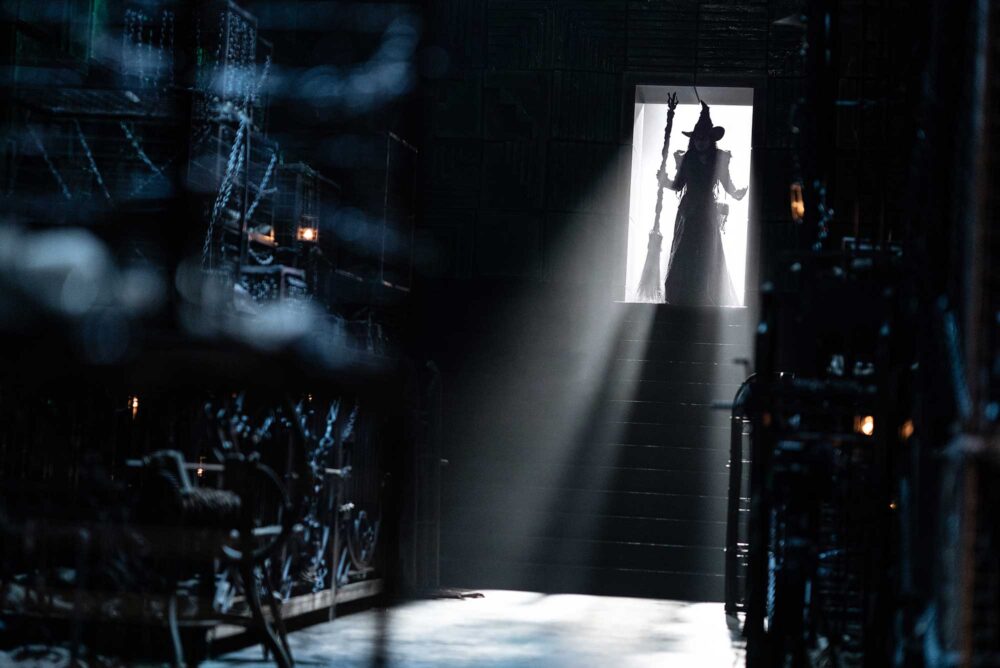
Having been separated by their differing ideology, ‘good’ witch Glinda (Ariana Grande) and ‘bad’ witch Elphaba (Cynthia Erivo) spend this adventure coming to terms with being on the right side of history and ousting a narcissistic, corrupt and manipulative leader. The Wizard (Jeff Goldblum) and his media maven Madam Morrible (Michelle Yeoh) have been hoodwinking the citizens of Oz and while Elphaba is already riding high (literally, on her broom) against him, Glinda and her fiance Prince Fiyero (current sexiest man alive, Jonathan Bailey) are slowly coming around. And when that pesky farmgirl, Dorothy, arrives, war ensues. The truth is lost amid the chaos…
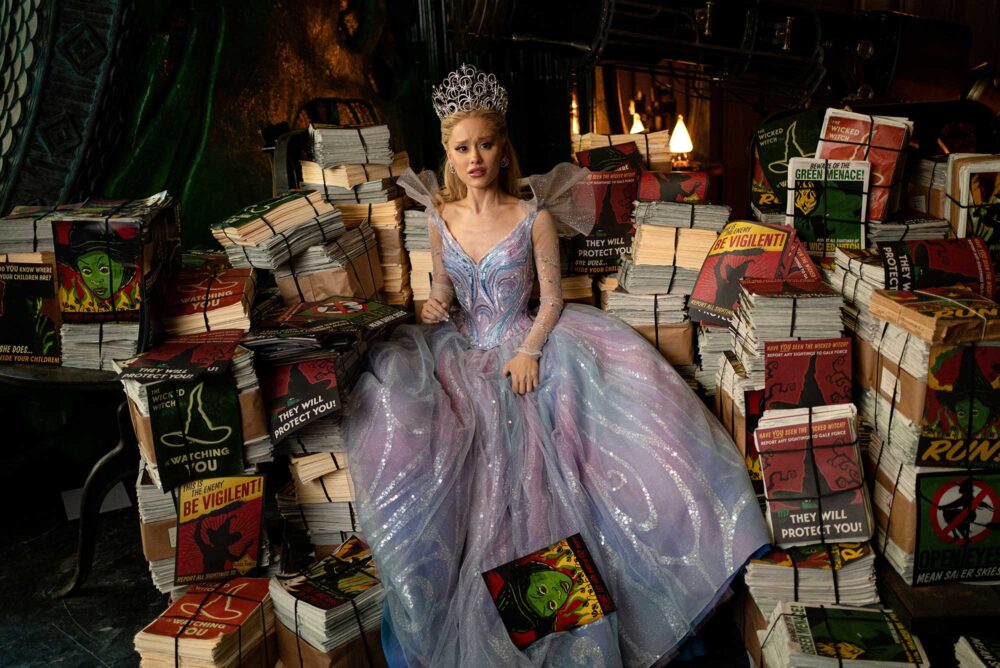
Exploring themes of integrity, identity and friendship, For Good boasts more bold Nathan Crowley sets, Paul Tazewell costumes and big musical numbers, but fewer banger songs. Missing crowd pleasers like ‘Popular’ and ‘Defying Gravity’, part two feels more drawn out than its predecessor, relying on the chemistry of its stars to do the heavy lifting. Luckily, Bailey and Erivo manage to hold attention with an illicit love affair that drives the film to its ‘melting’ conclusion with more passion than the BFF thread between the witches. Their steamy pre-coitus ditty As Long As You’re Mine delivers feels and a taste of reality amid the emerald vistas and flying monkeys. Erivo creates real pathos with Elphaba, while Grande struggles to make vapid Glinda sympathetic, despite sterling efforts. Even Colman Domingo, as a CGI Cowardly Lion, fails to make much of a dent. Despite knowing where this tale will ultimately end (as dictated by Victor Fleming’s 1939 tale), For Good takes its sweet time to arrive at it, then rushes the iconic moment with the bucket.
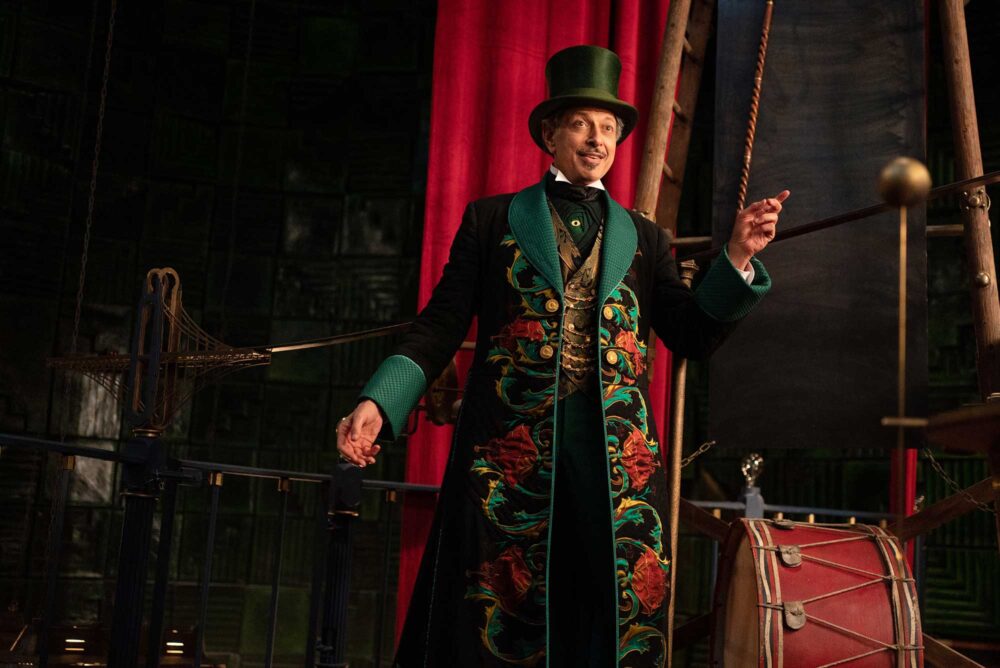
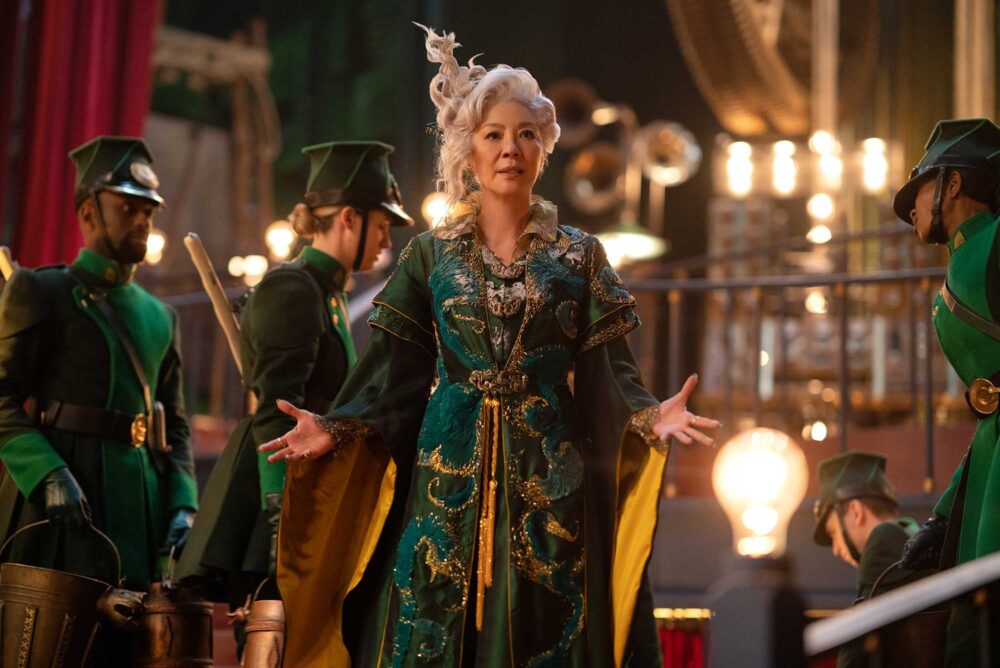
That said, those who’ve already bought into the silver-slippered allure of this world should be content with more rainbow eye candy. It will certainly bring in the green.

Pictures courtesy of Universal Pictures
Wicked: For Good is in cinemas now
Words by JANE CROWTHER
It’s been over a decade since Robin Hood magician Atlas (Jesse Eisenberg), mind-reader Merritt (Woody Harrelson), card shark Jack (Dave Franco), and escapologist Henley (Isla Fisher) got together as ‘The Horsemen’ to use their illusions and tricks to teach bad guys a lesson. Summoned by mysterious society, The Eye, the Horsemen are brought together with a new pack of young magicians to chase a McGuffin diamond around Europe and try to break the icy composure of South Africa mine owner Veronica Vanderberg (Rosamund Pike).
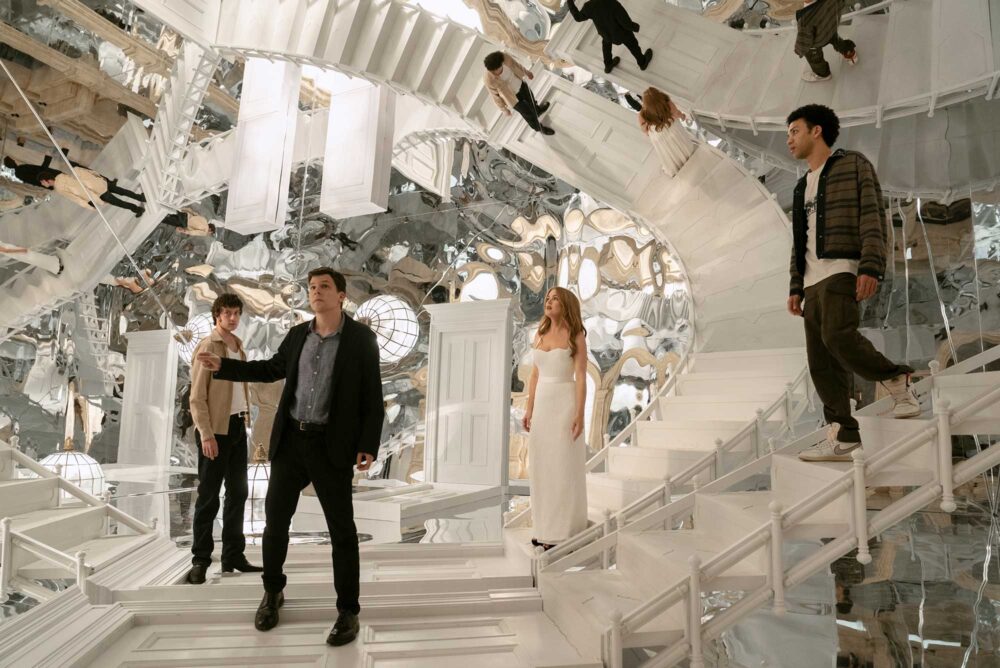
The new crew are played by Dominic Sessa, Ariana Greenblatt and Justice Smith but their MO is familiar. They like to sleight-of-hand steal fortunes from toxic tech bros and redistribute to their Gen Z audience via a series of fancy rabbit-out-the-hat stunts. On the trail of Vanderberg’s dirty arms money and fabulous gowns, the gang pitch up in Antwerp then find themselves in a fun house of illusion in Normandy, before private jetting to the Middle East for F1 shenanigans (one of them clearly has an expense account).
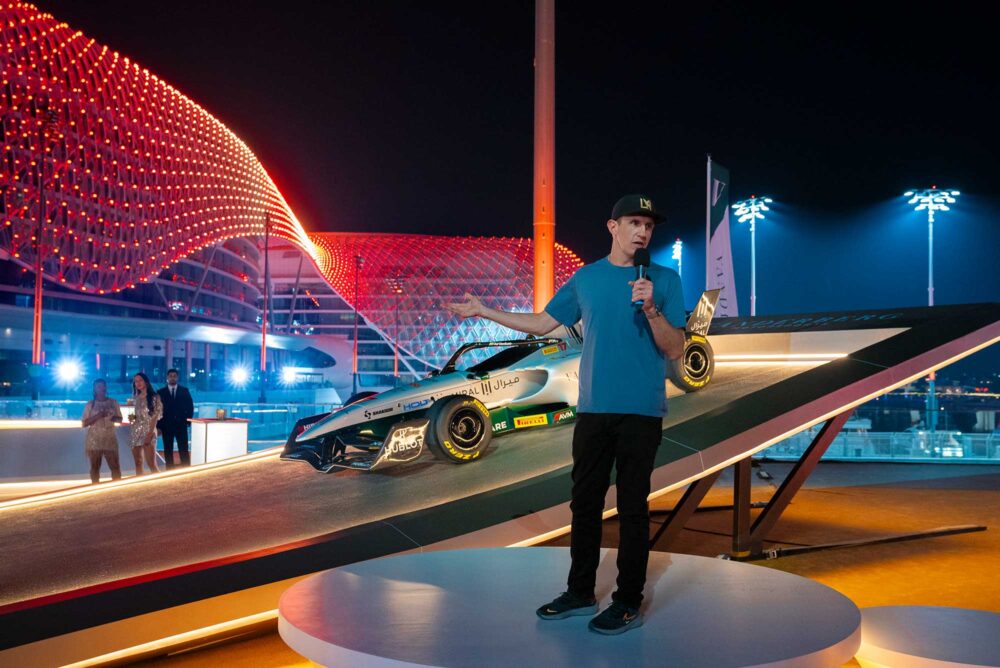
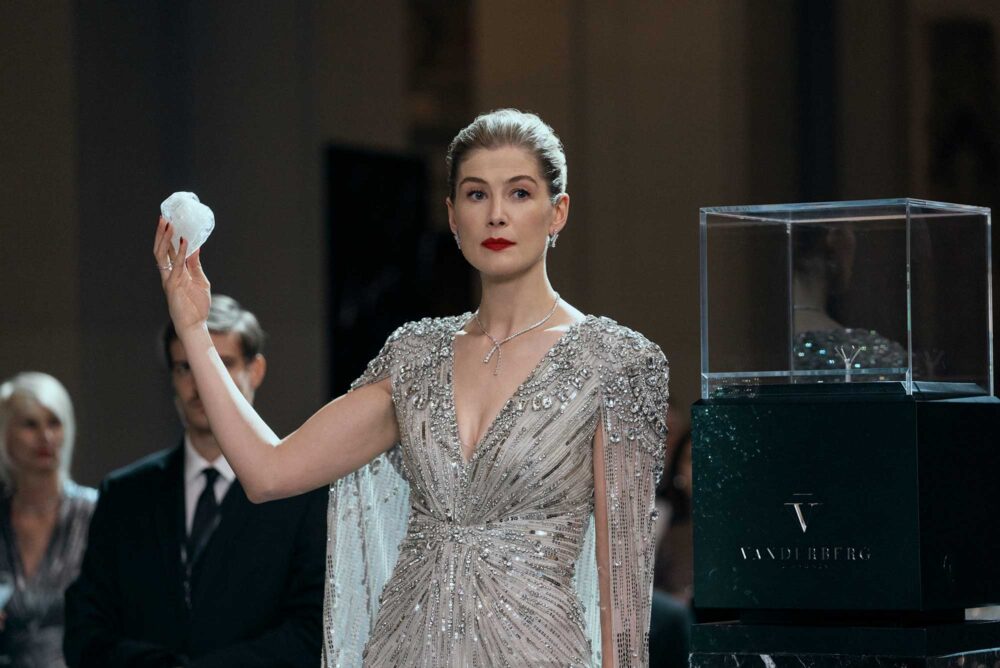
There’s a third reel reveal that can be guessed a mile off, a cameo from Morgan Freeman and a number of daft ‘magic’ tricks that impress on presentation rather than plausibility. For those seeking a perfect ‘second screening’ experience (the ability of a film to bring an audience along even if they’re simultaneously scrolling on another device), Now You See Me 3 provides constant exposition and a likable tongue-in-cheek vibe from a cast who clearly enjoyed reuniting. Newbie Pike is delicious as a foe, with an Afrikaans accent as clear-cut as her gems and haircut. She imperiously sells the Bond-lite energy almost singlehandedly, as one might expect from the former Miranda Frost.

In light of a recent real-life heist at the Louvre, it’s perhaps easier to suspend disbelief as the team lift the world’s largest diamond with some misdirection and costume changes. But the best magic tricks are those performed cinematically; fun fisticuffs in a forced perspective room, the incantation to Talladega Nights’ Ricky Bobby during a car chase, a pleasingly silly deception involving a lorry and a fog machine… Logic should be abandoned by all who enter, but for those looking for an amiable throwback romp, this threequel is diverting enough. But the success of the illusion relies on an audience not questioning the mechanics too robustly.
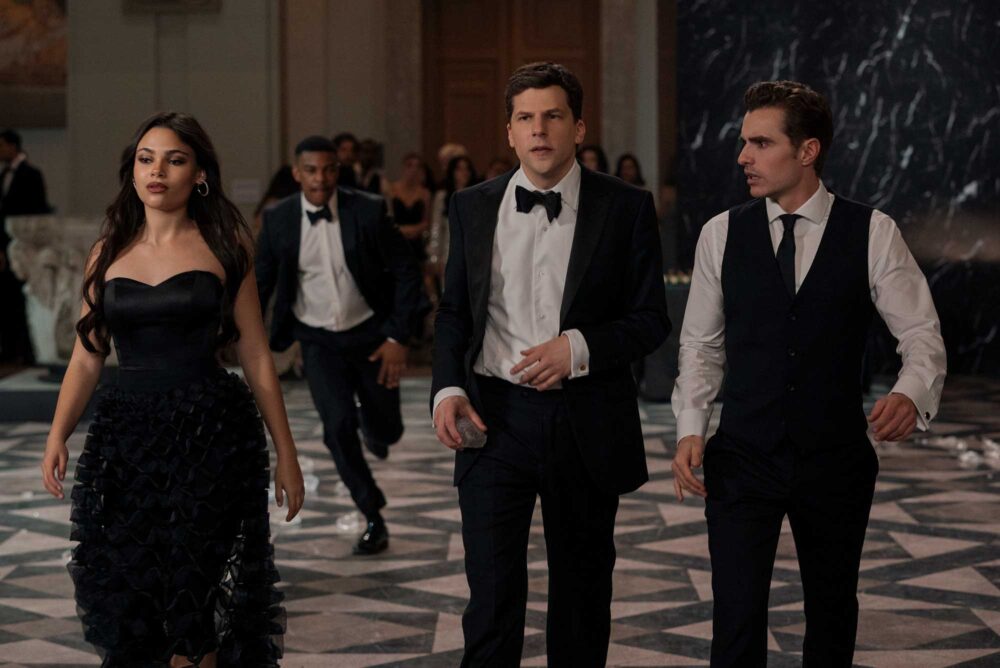
Words by JANE CROWTHER
Pictures courtesy of Lionsgate
Now You See Me, Now You Don’t is in cinemas now
Words by JANE CROWTHER
They say you can’t reinvent the wheel, but Dan Trachtenberg seems able to find new and nimble ways to revisit the Predator franchise after Prey and Killer of Killers – his latest, a surprisingly funny and heartfelt entry. The killing machine alien and apex predator, a Yautja of the Badlands, may have all the horrific accouterments of Schwarzenegger’s original (double mandibles, an impressive arsenal, a relentless bloodlust) but the tables are turned on both him and audiences as the hunter becomes the prey, the baddie becomes the goodie.

We meet Dek (Dimitrius Schuster-Koloamatangi) as a young Yautja warrior trying to earn his invisibility cloak and tribal respect from an unyielding father who thinks him a runt. Forced to prove his worth he’s sent to the inhospitable planet of Genna where every animal and plant kills, and the ultimate trophy awaits slaying: the ‘unkillable’ Kalisk. That’s if he can get to the monster on a planet where flora shoots anesthesia darts, tree vines are murderous and even the grass is razor sharp. What a floundering Dek might need is a buddy. And he finds two in chattering severed robot, Thia (Elle Fanning), who’s lost her legs but not her tongue, and a spitting blue simian-esque creature with cute eyes and an instant devotion to the alpha alien. Together they create a misfit gang who, via a series of eye-popping misadventures, take the piss out of each other and learn about honour, wolf pack analogies and that family isn’t necessarily the one you’re born to. Touching on themes of colonial plundering, parental toxicity and AI, Badlands serves up a more human and humane predator than we’ve seen before.


Franchise purists might be apoplectic over the idea of a softer, caring protagonist, but there’s no shortage of badass action, cool tech, inventive slayings and CGI wonderment as Dek goes on a true ‘hero’s journey’. And despite having a face full of fangs and only speaking in grunts (made understandable by Thia’s translator capability and subtitles), murder-fuelled Dek becomes a fully rounded character who elicits compassion. It’s the equivalent magic trick of making audiences shed a tear for The Terminator in Cameron’s second outing. Dek’s interactions with Genna are also made amusing courtesy of Fanning’s perky performance and smart narrative beats that leave space amid the propulsive set pieces. It’s fun, funny and fresh – things we haven’t been able to say about this film collection in the slump before Trachtenberg got his hands on it. It bodes well for what he might do next…

Words by JANE CROWTHER
Pictures courtesy of 20th Century Studios
Predator: Badlands is in cinemas now
Words by JANE CROWTHER
Clint Bentley co-wrote Sing Sing and his adaptation (with Greg Kwedar) of Denis Johnson’s 2011 novella is just as heartfelt, gem-like and profound – the seemingly specific experiences of American men rendered universal in their poetic handling. Taking Johnson’s slim but gorgeous prose and building out to a treatise on grief, memory, time, the unstoppable march of progress and mankind’s mark on the world, Train Dreams is a haunting, spellbinding experience that recalls the dreaminess of Malick and asks the audience to leave the theatre newly appreciating the beauty of the small things in life.

Opening in the Pacific Northwest in the early 20th century with a sonorous voiceover narrated by Will Patton (like a meditation in itself), we meet lumberjack Robert Grainer (Joel Edgerton), a quiet man who goes where the work is. That takes him through cathedral groves of ancient forests, felling trees and building bridges to accommodate the railroad that will change the continent. It’s a hard life – poorly paid, hard graft and laced with death and racism – but one that blooms with the arrival of Gladys (Felicity Jones, luminous) into his life. A vibrant, capable woman who sees the interior story of this stoic man, Gladys provides happiness and a joyous filter on the world so that Robert can see its wonder. As the couple build an idyllic cabin together and welcome a baby, Robert has an anchoring home to return to from his nomadic labouring.

When he’s away he pines for his family and begins to appreciate people and places anew; Arn (William H Macy) the explosives expert who acknowledges the majesty of the trees the men work among, a religious chatterbox (Paul Schneider) whose background isn’t as virtuous as his bible quotes, the nameless men crushed like ants beneath falling logs, their boots left nailed to trunks as proof of their existence. And it’s this opening of his heart that fells him when tragedy occurs, forcing him to take solace in nature, the compassion of a Native American man (Nathaniel Arcand), the companionship of dogs and the resilient outlook of a forestry fire warden (Kerry Condon) who has returned from nursing duties in WW1. As technology advances, as man lands on the moon and as his particular way of life disappears, Robert moves through life nursing pain as evidence of love, of life.

Breathtakingly lensed by Adolpho Veloso using natural light, Robert’s seemingly unremarkable life becomes extraordinary – a man forgotten in the footnotes of history turned heroic figure. Damp forests shiver in the breeze, sunsets glow over babbling brooks, a humble chicken supper glows in candlelight, a train tunnel frames a tableaux that could be out of a painting… tracking Robert through his world. His capacity to yearn is clear in the cabin he builds and which is eventually subsumed back into the forest, the biplane he whimsically takes as an older man exhibits an ability to continue to grow, observe, persevere, like the trees around him. Though Robert doesn’t say much, Edgerton imbues him with such rich inner life that his homespun experiences feel complex, divine, intense. And though very much set in a specific, vanished time, they feel resonant. Covering themes of racism, immigration, deforestation, environmentalism, Train Dreams feels both intimate and global – a film like its lead character; deceptively simple but teeming with life, ideas and, ultimately, hope. By the time Nick Cave is singing plaintively on the end credits audiences will want to hug their loved ones (and a tree) a little closer.

Words by JANE CROWTHER
Pictures courtesy of NETFLIX
Train Dreams is in cinemas now and on Netflix from 21 November
Words by JANE CROWTHER
Nia DaCosta puts a new spin on Ibsen’s classic Hedda Gabler by shifting the action from 19th-century Oslo to a sprawling country pile in 1950s England where the titular wife of an academic (Tessa Thompson, with a clipped accent of disdain) throws a house party – impulsively inviting a friend, Eileen (Nina Hoss) who, it transpires, is her ex-lover. ‘Hedda loves to eat out,’ one party wag announces tartly when discussing the dinners the newlyweds have enjoyed on their lavish honeymoon.

Eileen is a scholar and rival to Hedda’s hubby George (Tom Bateman), and arrives at the soirée touting the manuscript of her new book, a barely controlled drinking problem and a new love interest (Imogen Poots). If the book is published, Eileen will eclipse George and threaten the precarious life the Gablers share, one party away from not affording their affluent lifestyle and in need of a professorial job which will be bestowed by another party guest, Professor Greenwood (Finbar Lynch). To assure her sexual dominance, social standing and financial security all Hedda needs to do is manipulate her guests during one bacchanalian night of boozing, dancing, skinny-dipping and gun-play…

DaCosta’s decision to bring the party described in the play into the forefront of the action is a dramatic improvement, giving this adap a danger and kineticism as Sean Bobbitt’s camera glides from room to room, out into garden mazes, up staircases to whispered power negotiation and to a lake as dark as the secrets of the players.

Like a Gatsby party unravelling in real time, relationships are tested, rage and jealousy boils and sex simmers – while the band plays on and chandeliers crash to the floor. At the heart of it all is Thompson in a fabulous dress; sardonic, feral, cruel. It’s an imperious performance that will likely garner noms chatter as well as dislike, while an ambiguous ending change might enrage purists. But for audiences looking for a fresh take on a classic – and one which teases feminism, equality and sexuality from a well-worn text – Hedda is a party invite worth taking up.

Words by JANE CROWTHER
Pictures courtesy of AMAZON MGM STUDIOS
Hedda is in cinemas now
Words by JANE CROWTHER
Tourette’s Syndrome is often misunderstood as merely cursing – and I Swear gives plenty of that to comedic effect. But as a study of a debilitating and socially ostracising condition it’s also loaded with compassion, serving as both a useful educational tool and a feelgood Brit film with the social conscience DNA of The Full Monty or Billy Elliot.

Following the story of Galashiels local John Davidson (Robert Aramayo) as he looks back on his life from an MBE ceremony (where he tells the Queen to F-off), the film charts his difficult journey from developing uncontrollable tics as an 80s teen (Scott Ellis Watson) in an unforgiving school, through an adolescence marked by parental disdain and dust-ups with people taking offence at his outbursts. By the time he’s a young man (now played by Rings of Power’s Aramayo), his prospects of getting a job, friends or a life look bleak. But when he meets a mental health nurse, Dottie (Maxine Peake) and the gruff caretaker of a community centre, Tommy (Peter Mullan), John gets the love and respect he needs to forge a path to becoming a leader in the Tourette’s community and a campaigner for greater understanding. Along the way he’ll suffer false arrest, assault and cruelty, as well as moments that restore a belief in humanity.

If that sounds dry, it isn’t. Though the script by writer/director Kirk Jones aims to enlighten, there’s inescapable fun to be had in tracking John’s misadventures. Aramayo is supremely charming as a cheeky chap who involuntarily shouts his innermost thoughts, spits food and punches people while also apologising profusely. The hurt in his eyes is as readable as the bravura of his posturing, and his delivery of the tics that mark his condition feels authentic. The resigned dismay on his face as he’s shouting ‘I’m a pedophile!’ or ‘spunk for milk!’ while making a cuppa (and worse) is both undeniably funny and heartbreaking.

He’s surrounded by similarly excellent performances; Peake is warmth incarnate while Shirley Henderson (as John’s cold Mum) is brilliantly brittle. Very nearly stealing the show, Mullan essays patience and no-nonsense kindness that is a delight to watch. Along the way audiences may learn something – not only about Tourette’s, but also about the resilience and magnificent power for empathy of people. In our current dark times, that feels like a gift at the cinema. It’s also got a banging soundtrack and is likely to figure in the BAFTA shortlist come February. So worth getting a F-ing ticket…

Words by JANE CROWTHER
Pictures courtesy of STUDIOCANAL
I Swear is in cinemas now
Photographs by GREG WILLIAMS
Words by JANE CROWTHER
Hollywood Authentic follows Lily James on-set in LA of her first producing project – the biopic of Bumble founder and self-made billionaire Whitney Wolfe Herd – and to the premiere on hometown soil in London. James tells us about the challenge of playing her ‘absolute hero’.

‘I’ve always been hugely protective of the characters I play,’ Lily James tells Hollywood Authentic as she welcomes us into her trailer on the LA set of Swiped in early June 2024, her inaugural project where she leads the cast as well as produces. ‘But this is on a bigger scale.’
Exec-producing alongside her partner Gala Gordon and producers Sarah Shepherd, Jennifer Gibgot and Andrew Panay, Swiped tells the story of Whitney Wolfe Herd’s phenomenal rise as a co-founder of Tinder before leaving in 2014 to establish Bumble and becoming the first woman to take a company public at the age of 31. James’ Downton Abbey colleague Dan Stevens co-stars as Wolfe Herd’s business partner in the film which releases this week. Rachel Lee Goldenberg directs a script written by herself, Bill Parker and Kim Caramele the film tracks period of time at Tinder and then continues on as she goes onto build bumble becoming at the time the youngest women ever to take a company public. As a production team, the decision was made to use publicly available information to tell this story with a highly experienced research team. They never reached out to Whitney. James herself (seen below with acting coach Leigh Kilton-Smith) became obsessed with reading, listening, and watching everything she could about Wolfe Herd.
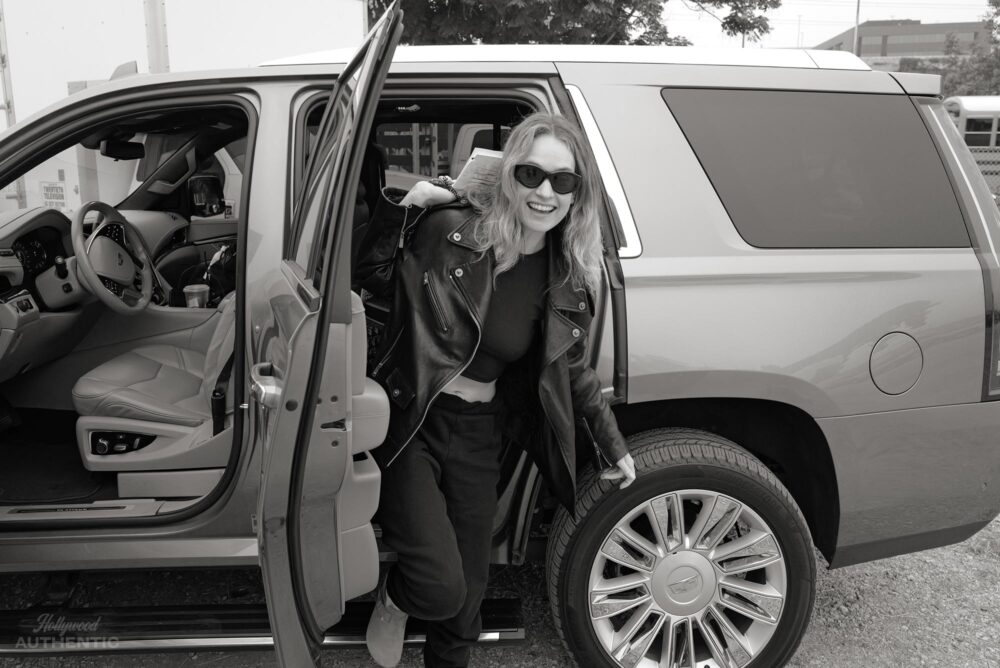
‘She was the youngest woman to ever take a company public,’ James says of the Wolfe Herd, transforming into her via blue contact lenses and her signature engaging voice. ‘This is based on her incredible journey to make the Internet safer for women and create a safe space where women can make the first move in their lives and in relationships.’
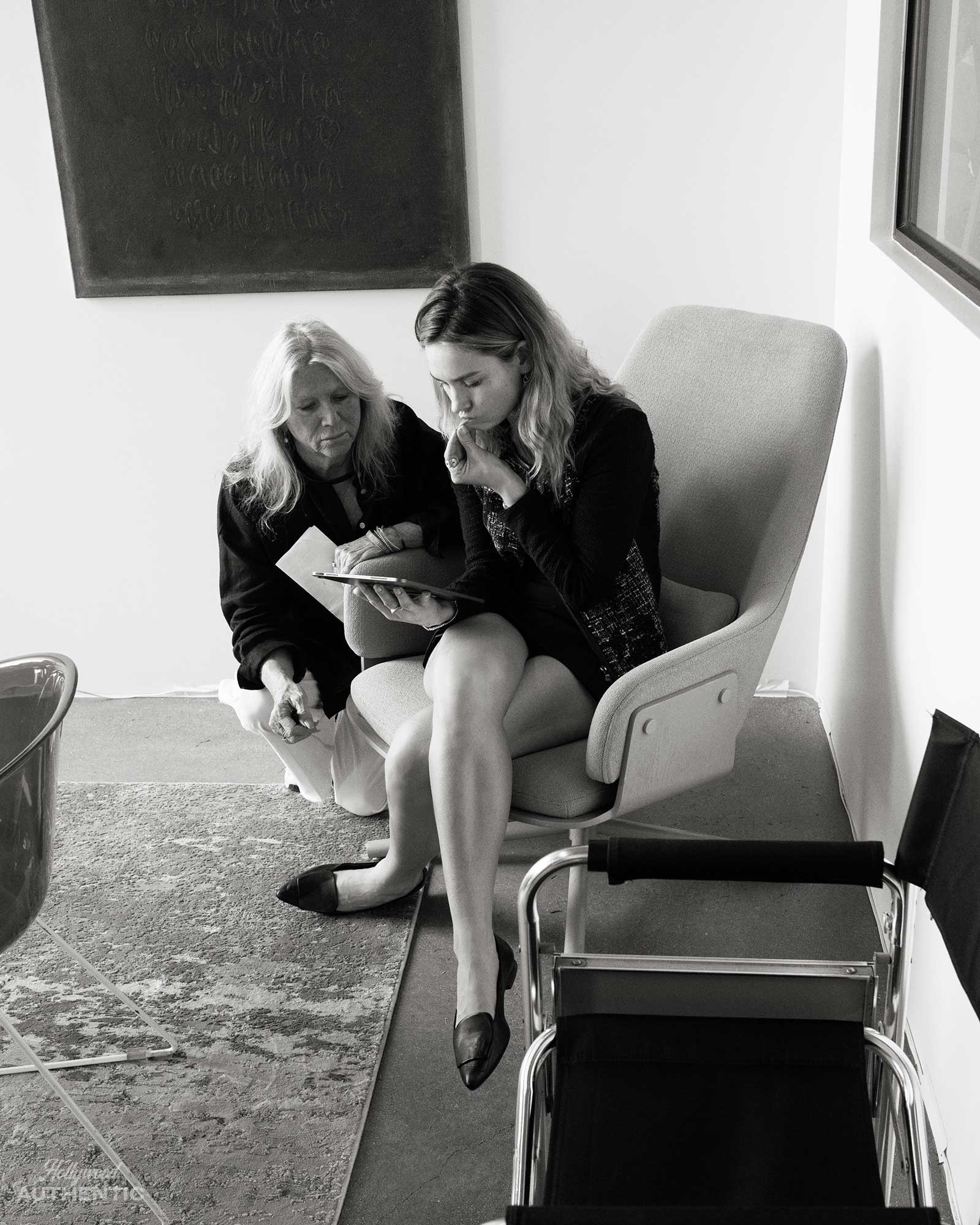
Wolfe Herd built Bumble as CEO and founder, taking the company public in 2021, stepping down in 2023 as a billionaire, trailblazer and innovator. She is something of an inspiration to James who describes her as ‘brilliant’ as she gets ready to film scenes in an office building dressed to look like Tinder HQ. James climbs onto a huge furry ‘E’ in her Wolfe Herd businesswear and loafers. ‘Her superpower is that she makes everyone around her feel safe and comfortable – and fall in love with her. Because she listens and is empathetic to her core. That’s what makes her a great leader and someone people want to follow and work with.’
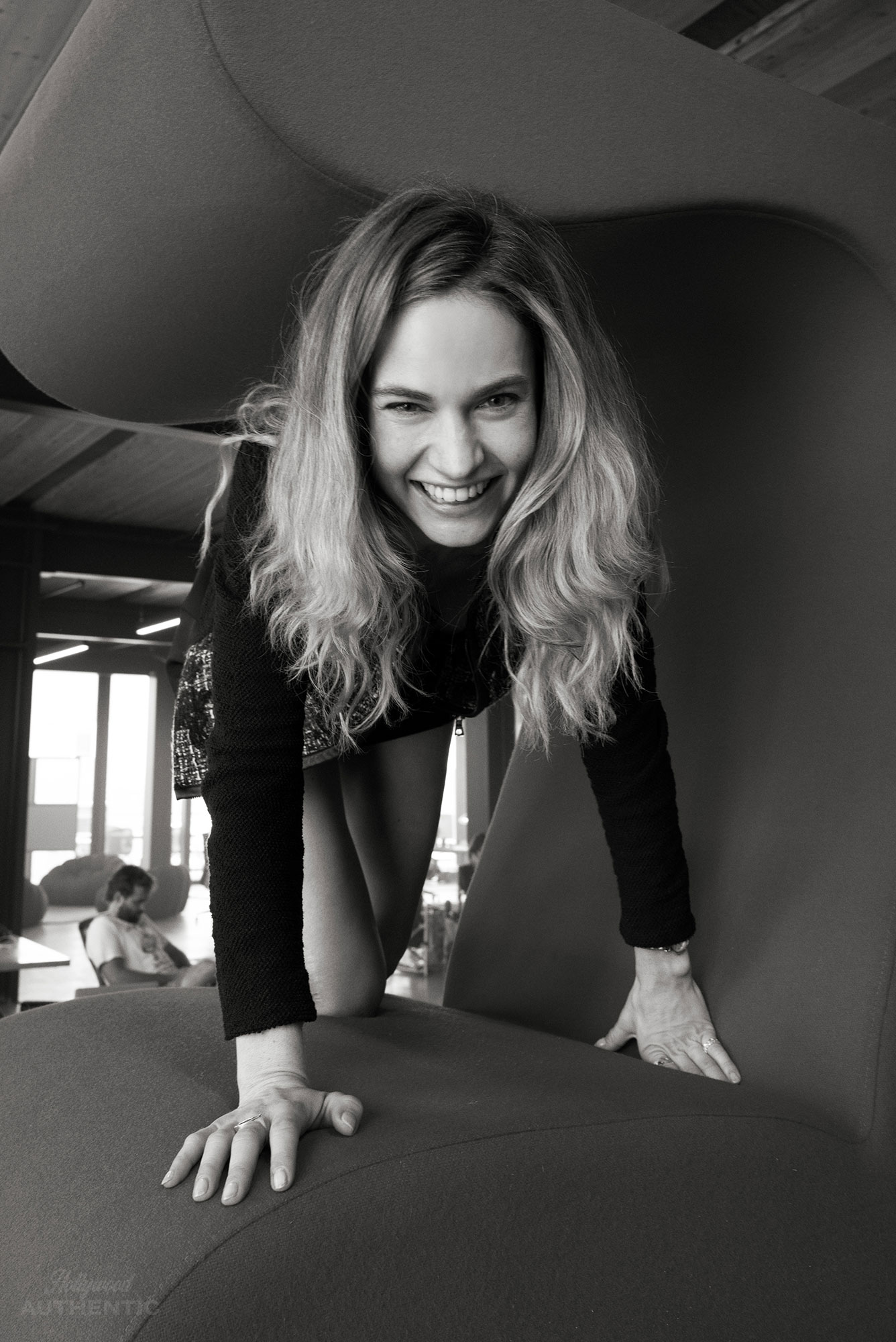
James is spreading her own leadership wings with her producer hat on – alongside other projects she is developing under her company, Parodos – but is enjoying the challenge. ‘Every day genuinely feels like a fight to make sure that I’m fully happy with everything.’ Bowing at TIFF, Swiped premiered in James’ hometown of London on an overcast day in September where Greg Williams caught her dodging the rain in Soho on her way to the Mayfair Curzon. Like Wolfe Herd, James is enjoying the moments of being a female leader in a male-dominated industry…
Photographs by GREG WILLIAMS
Interview by JANE CROWTHER
Swiped is available on Disney+ and Hulu now

Words by JANE CROWTHER
For what is ostensibly a stoner comedy, One Battle After Another moves pretty fast. Opening with a militant counterculture group, The French 75, in El Paso freeing border-crossing detainees from a military compound via gunplay and fireworks, the pace starts at running and doesn’t flag in Paul Thomas Anderson’s most commercial, entertaining project to date. Pat (Leonardo DiCaprio) is the pot-smoking explosives expert of the gang, led by charismatic agent of chaos Perfidia Beverly Hills (Teyana Taylor, electric). The duo are lovers and, during their US/Mexican border compound attack, taunt – in every way – tightly wound Colonel Lockjaw (Sean Penn). A man so coiled his walk is a jerking strut, Lockjaw’s disgust/desire for Perfidia then powers a manhunt for the group, also conducted at a (literal) sprint. Those battles that come one after another are the constant state of flight Pat finds himself in, when 16 years after key events, Lockjaw is still on his tail. And Pat is still baked. As he tells an underground switchboard operator demanding the secret passwords when he dials in for help: “I’ve smoked a lot and I can’t remember…”
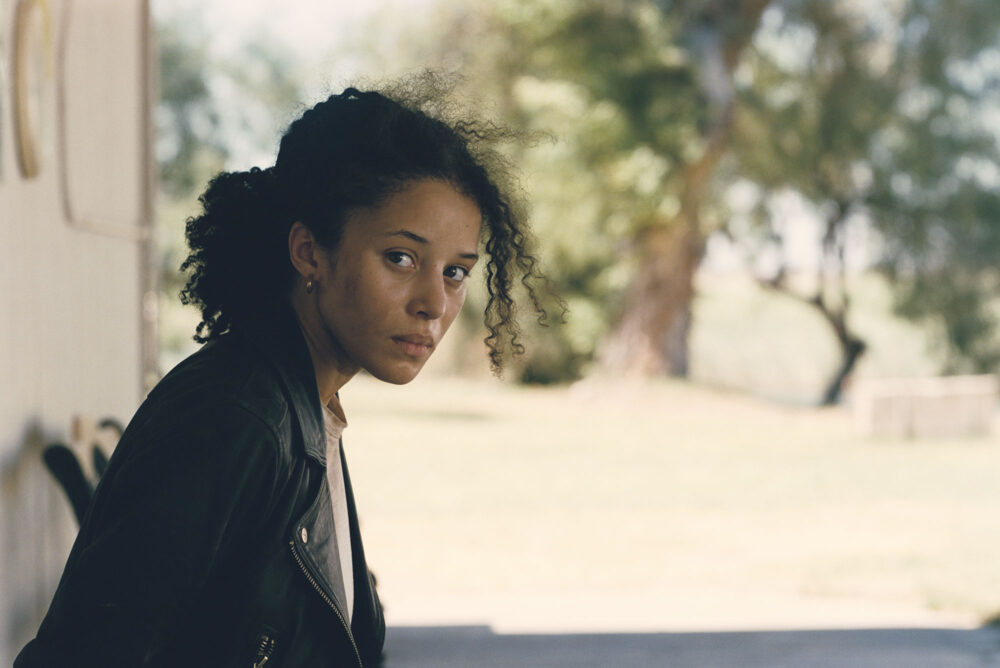
Loosely based on Thomas Pynchon’s Vineland, Anderson takes in themes of immigration, white supremacy, racism and corruption by making them a lot of fun and a lot of a mess. Pat is a befuddled fool who cocks up escapes and rescues but is driven in his mission to protect his teen daughter (Chase Infiniti, superb). He may run around like a headless chicken in a mangy dressing gown, throwing himself inexpertly from a car and falling off roofs, but his paternal love is sure. DiCaprio is a hoot to watch as he careens from one disaster to another, the funniest and loosest he’s been in his career. His nemesis, Lockjaw, is another Penn masterclass. Sketched as a psychological soup of neuroses and kinks, Penn takes Anderson’s character and physically inhabits him to grotesque and fascinating effect. Bulging out of his clothes and, it seems, skin – with a comedy haircut, southern drawl and a barely contained rage – Lockjaw is like a psychotic Foghorn Leghorn on steroids, and a dirty pleasure to watch.

Though DiCaprio and Penn are the main adversaries in this story of 21st-century America, every player is sensational. Benicio del Toro is a cool sensei who likes a beer as he saves the day, Infiniti aces her debut as a collected teen parenting her lackadaisical dad and Tony Goldwyn brings a MAGA chill to proceedings as an industry leader with a secret basement HQ and views that are only missing white hoods. But the absolute comet who blazes through it all – and leaves a vapour trail when off-screen – is Teyana Taylor; magnificently, unapologetically fierce, with two lone eyelash extensions and a semi-automatic, she is one of cinema’s great female creations.
Filmed in VistaVision with a propulsive Johnny Greenwood score and numerous sequences you’ll want to watch on repeat (DiCaprio trying to keep up with parkour dudes, badass nuns, a Christmas meeting in a kitsch bunker, an undulating car chase), One Battle After Another is funny, witty, salient and thrilling. Plenty of bang for your buck.
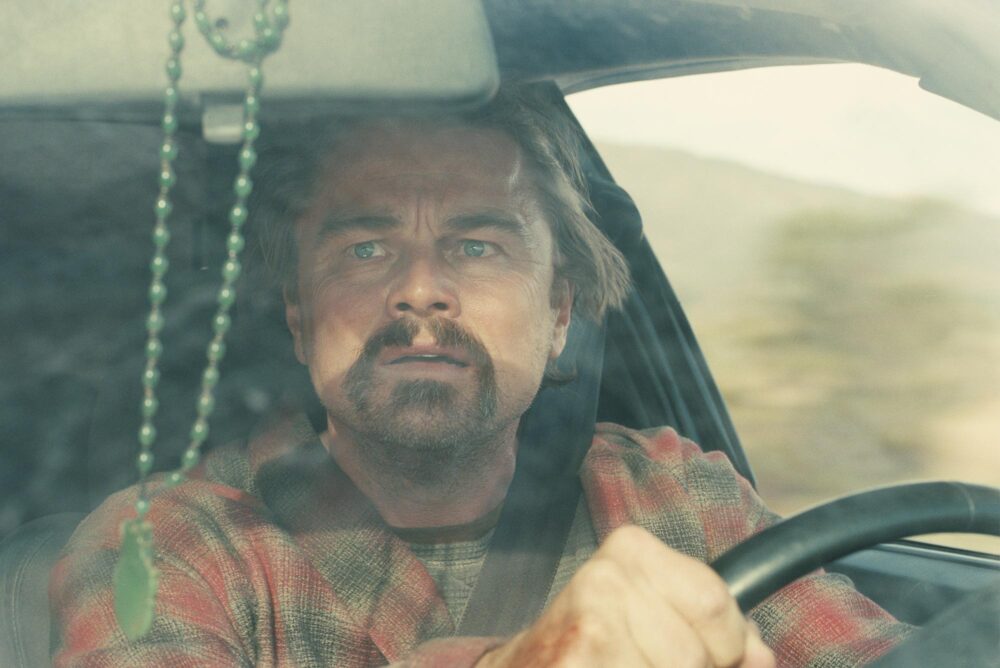
Words by JANE CROWTHER
Pictures courtesy of WARNER BROS. PICTURES
One Battle After Another is in cinemas now